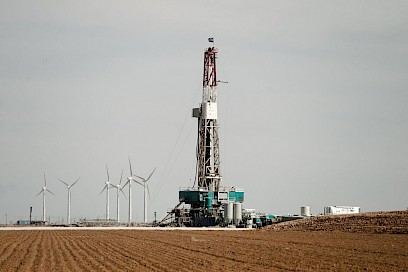Canada's environmental workforce adds 34,600 jobs during pandemic
 Canada’s environmental workforce grew by five per cent in 2020 — adding nearly 35,000 net new jobs — even as the impact of the pandemic rattled the economy and labour markets.
Canada’s environmental workforce grew by five per cent in 2020 — adding nearly 35,000 net new jobs — even as the impact of the pandemic rattled the economy and labour markets.
That’s according to a new report from ECO Canada, which also forecasts thousands more environmental openings over the next five years.
ECO Canada’s count includes workers across various industries and occupations that drive or support environmental protection, resource management and sustainability.
The report, released Wednesday, says the environmental workforce added about 34,600 net new jobs last year, bringing the total to around 689,900 workers.
The gains were largely driven by environmental employment in Ontario (35,704) and Quebec (11,460), according to ECO Canada.
New Brunswick, Prince Edward Island and the territories also added environmental jobs.
Six provinces saw decreases — due in part to declines in environmental work associated with natural resource sectors, including oil and gas, which saw activity sink during the pandemic.
Nilsen listed several reasons for the gains in green jobs.
Among them, he said consumer demand has driven the market for environmental goods and services. There’s also growing interest in energy efficiency, sustainability and green investing. He said governments have also made investments in environmental initiatives.
Nilsen expects all provinces and territories will be looking for environmental workers over the next five years as the economy recovers and grows.
The forecast predicts there will be 173,000 net environmental job openings across the country through 2025, including 74,400 jobs created due to growth and 98,300 from retirement.
“This will be a sector that will require a lot of recent graduates, but also a lot of transitioning workers,” Nilsen said.
The highest rate of growth to 2025 is expected to be in Alberta, where various industries are forecast to need 34,900 additional environmental workers over the period.
One source of activity will be Greengate Power’s Travers Solar project in southern Alberta.
When construction is complete by the end of 2022, it’s set to be Canada’s largest solar facility. Building it will require roughly 500 workers, said Greengate CEO Dan Balaban.
“As the technology continues to evolve and continues to improve, we expect that opportunity to grow here in the province,” Balaban said.
“But it’s also a global opportunity. It’s the fastest growing source of energy we have.”
A report from RBC Economics on Tuesday pointed to economic opportunities for Canada driven in part by the United States’ focus on climate change, pointing to carbon capture technologies, clean energy and electric vehicles.
Among the country’s advantages are expertise in clean technology, but it says “new investments in skills training and strategic immigration will be essential to Canada’s ability to retain or win higher-value aspects of supply chains.”
Trevor Melanson, spokesperson for Clean Energy Canada, said the B.C.-based think tank is anticipating significant growth in clean energy jobs through the rest of the decade.
But he said it’s also important that Canada keeps up with other nations, whether it’s in areas like green hydrogen or clean technology development.
“Overall, I’m optimistic,” Melanson said.
You can return to the main Market News page, or press the Back button on your browser.

